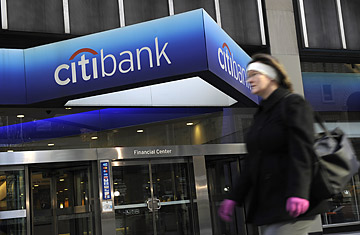
City Bank of New York was founded in 1812 by a group of merchants hoping to fill the void left by the demise of the first Bank of the United States, the sort-of central bank whose charter Congress had allowed to expire the year before. City nearly went under in the Panic of 1837 but was bailed out by the country's richest man, fur magnate John Jacob Astor. Astor's associate Moses Taylor built City into a bulwark of sound finance--big capital reserves, stingy lending standards--that bankrolled the Union during the Civil War and easily withstood the first postwar financial panic, in 1873.
Thus began a pattern of alternating conservatism and risk-taking, success and near failure, that has marked the banking enterprise now known as Citigroup--and the American financial system--ever since. James Stillman, who became City's president in 1891, combined prudence with great ambition. City Bank cruised through the Panic of 1893, thanks in part to the huge stash of gold that Stillman had acquired--gold being the backing for credit then--because he sensed trouble. City joined J.P. Morgan in bailing out the nearly bankrupt Federal Government in 1895 and soon grew to be the country's biggest bank. Its growth went international in 1914, after City lobbied Congress to tweak the Federal Reserve Act and allow branches abroad. (See the best business deals of 2008.)
With that growth came near disaster, as big loans to Cuban sugar planters went bad. What saved the bank was the salesmanship of Charles E. Mitchell, head of City's securities arm, who repackaged the bad Cuban debt--and went on in the 1920s to find ever more creative ways to sell securities and lend to the burgeoning middle class. Mitchell, who became president of the bank in 1921, built City into the first financial supermarket. When everything financial turned toxic in the early 1930s, he became the most prominent scapegoat for the disaster. He was the main target of the famous Pecora hearings in Congress, was arrested for--but not convicted of--tax evasion and resigned in disgrace. The Glass-Steagall Act of 1933 put an end to the blending of banking and securities businesses that Mitchell had championed. City lived on as a chastened, smaller bank.
Decades of conservatism and very little new lending--by the mid-1940s, more than half of City's assets were in U.S. government bonds--gave way to a new era of growth in the 1950s. The drivers were international expansion and domestic innovation, and the leader was Walter Wriston. The bank's CEO from 1967 to 1984, Wriston changed the y in City to an i. After years of success, though, he left the bank with billions in bad loans to Latin America. Only profits generated by the U.S. retail-banking and credit-card juggernaut built by Wriston's protégé John Reed--combined with a certain amount of forbearance by bank regulators and a lot of cash from Saudi Arabia--enabled Citi to survive. Reed then agreed to a 1998 merger with Travelers Group, which necessitated congressional repeal of the Glass-Steagall Act and established Citigroup as the greatest financial supermarket on earth.
